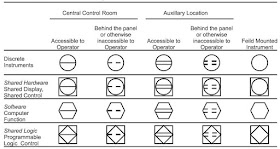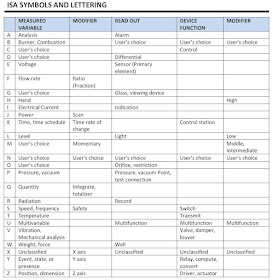P&ID stands for Piping and Instrumentation Diagram or Drawing. Alternatively, it could also be called Process and Instrumentation Diagram or simply P&I diagram or drawing. P&IDs are also known as Engineering Flow Diagrams or Mechanical Flow Diagrams .P&IDs are often used in the process industry to show the process flow and other installed equipment and instruments. They show the interconnection of process equipment and the instrumentation used to control the process.
Piping and Instrumentation Diagrams play a crucial role in the design and engineering of process plants and piping systems. P&IDs are schematic diagrams that contain engineering and design details of the process plants. It is a pictorial representation of:
- Key Piping and Instrument Details
- Control and Shutdown Schemes
- Safety and regulatory requirements and
- Basic Start-up and Operational Information
A P&ID is a working document that is used by every discipline involved in the design, engineering and construction of process plants. It is used as a Process Plant Layout and Piping Design reference for checking engineering and design documents and drawings associated with a project.
- P&IDs are also used in material take-off, in generating a “Bill of Materials” for procurement and construction. P&IDs typically contain the following information:
- All the equipment and their specifications, usually presented in the form of a table
- All piping and line specifications
- All piping system components such as fittings, flanges and valves with their specifications
- All instrumentation and control components
- Flow directions
- Information on process variables such as pressure and temperature.
- Material Specifications
- Specialty Items such as strainers.
- Control Input and Output, Interlocks and Alarm System
- Interconnections References
- Computer Control System input
- Identification of Components and Subsystems Delivered To and By Others
P&IDs play very important roles in plant maintenance and modification in that they demonstrate the physical sequence of equipment and system as well as how they all connect. During the Design stage they provide the basis for the development of system control schemes, allowing for further safety and operational investigations like HAZOP (Hazards and Operability Study).
ISA P&ID Symbols:
In the process industry, a standard set of symbols are used to prepare piping and instrumentation diagrams (P&IDs). Most of the P&ID drawings you may come across have instrument symbols based on ISA standard S5.1 (ISA stands for Instrumentation Systems and Automation Society).
Let us start by understanding the ISA standard symbols for developing P&ID drawings
ISA S5.1 defines four general symbols for identifying instruments on a Piping and instrumentation diagram (P&ID). They are:
(a) Discrete instruments
(b) Shared control/display
(c) Computer function
(d) Programmable logic controllers
These distinct symbols used in P&IDs are grouped into three location categories namely:
(a) Primary location usually a central control room
(b) Auxiliary location possibly a local panel in the field or process plant
(c) Field mounted
On P&ID drawings, individual instruments are indicated by circular symbols or circle. Shared control/display elements are circles surrounded by a square. Computer functions are indicated by a hexagon and programmable logic controller function are shown as a diamond inside a square
Adding a single horizontal bar across any of the four graphical elements indicates the function resides in the primary location category. A double line indicates an auxiliary location, and no line places the device or instrument in the field. Devices located behind a panel-board in some other inaccessible location are shown with a dashed line.
The table below gives a brief description of the four general P&ID symbols used in instrumentation diagrams.
See common P&ID symbols used in developing instrumentation diagrams for details on the various symbols used in P&ID drawings.
Letter and number combinations appear inside each graphical element and letter combinations are defined by the ISA standard. Numbers are user assigned and schemes vary. while some companies use sequential numbering, others tie the instrument number to the process line number, and still others adopt unique and sometimes unusual numbering systems.
The first letter defines the measured or initiating variables such as Analysis (A), Flow (F), Temperature (T), etc. with succeeding letters defining readout, passive, or output functions such as Indicator (I), Recorder (R), Transmitter (T), and so forth
The table below gives a breakdown of the various letters used in Piping and instrumentation diagrams (P&IDs) and their functions:
To understand better how various letter combinations are used in constructing instrument letter abbreviations found on Piping and instrumentation diagram symbols in P&ID drawings, check out:

